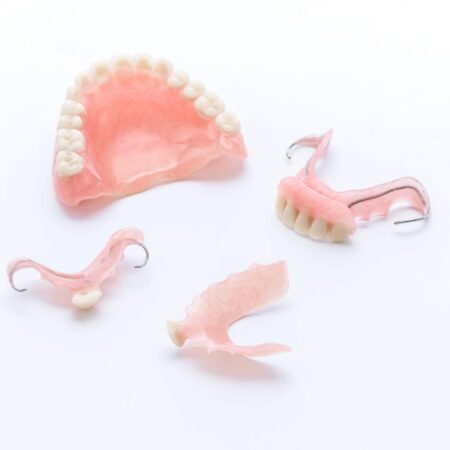Why Flossing Is Key to a Healthier Smile: Myths vs. Facts

When it comes to oral hygiene, brushing often gets all the glory. But there’s another hero in your dental care routine that’s just as important: flossing. Unfortunately, it is often overlooked or misunderstood. Whether you’re a dedicated flosser or someone who skips it altogether, this blog is here to debunk myths, share facts, and help you understand why flossing is key to a healthier smile.
Myth 1: Brushing Alone Is Enough
One of the most common misconceptions is that brushing your teeth twice a day is sufficient for maintaining good oral health. While brushing does an excellent job of cleaning the surfaces of your teeth, it doesn’t reach the tight spaces between them. That’s where flossing comes in.
Fact: Flossing removes plaque and food particles from between your teeth and under the gumline, areas that your toothbrush simply can’t reach. If left unchecked, plaque can harden into tartar, leading to gum disease, cavities, and bad breath. Combining flossing with brushing is essential for comprehensive oral care.
Myth 2: Flossing Is Only Necessary When Food Gets Stuck
Some people only reach for floss when they feel something stuck between their teeth after a meal. While it’s great to remove any food debris, flossing serves a much more important purpose.
Fact: Daily flossing prevents the buildup of plaque between your teeth, which can lead to tooth decay and gum disease. It’s not just about removing food particles — it’s about keeping harmful bacteria from forming in those hard-to-reach areas. Flossing once a day is key to maintaining oral health and preventing long-term issues.
Myth 3: Flossing Hurts or Makes Gums Bleed
If you’ve ever noticed bleeding or discomfort when flossing, you might assume that it is harmful to your gums. However, the opposite is true.
Fact: Bleeding gums are often a sign of inflammation caused by plaque buildup. This means your gums need more attention, not less. When you start flossing regularly, your gums may bleed for the first few days, but as they become healthier, the bleeding should stop. Regular flossing helps reduce inflammation and strengthen your gums, leading to a healthier mouth overall.
Myth 4: I Don’t Need to Floss If I Use a Water Flosser
Water flossers have become popular in recent years as a convenient alternative to traditional flossing. Some people think they can ditch regular floss entirely in favor of water flossers.
Fact: While water flossers are a great supplement to your oral care routine, they shouldn’t replace traditional flossing. Water flossers can be effective for people with braces, dental implants, or gum sensitivity, but they don’t remove plaque as efficiently as string floss does. Dentists recommend using both for the best results.
Myth 5: I’m Too Old to Start Flossing
Another myth is that if you haven’t been flossing regularly for years, it’s too late to start now. This couldn’t be further from the truth.
Fact: It’s never too late to start it! Even if you’ve skipped it for most of your life, starting now can still significantly improve your oral health. By removing plaque and preventing gum disease, regular flossing can reduce your risk of cavities and even save your teeth in the long run.
How to Floss Properly: A Step-by-Step Guide
Now that we’ve debunked the most common myths, let’s go over how to floss the right way:
- Use about 18 inches of floss and wind most of it around your middle fingers, leaving about 1-2 inches to work with.
- Hold the floss tightly between your thumbs and index fingers and gently slide it between your teeth.
- Curve the floss into a “C” shape around each tooth and slide it up and down along the side of the tooth, going slightly under the gumline.
- Use a clean section of floss for each tooth and repeat the process for all your teeth.
The Benefits of Flossing for Your Oral Health
it doesn’t just help you avoid cavities and gum disease; it also promotes overall health. Studies have shown a link between poor oral health and systemic conditions such as heart disease, diabetes, and respiratory issues. By keeping your mouth healthy, you’re also helping to protect the rest of your body.
Take the Flossing Challenge!
If it isn’t already part of your daily routine, now’s the perfect time to start. Commit to flossing every day for two weeks and see the difference in how your gums feel. You’ll likely notice less bleeding, less plaque buildup, and fresher breath.












